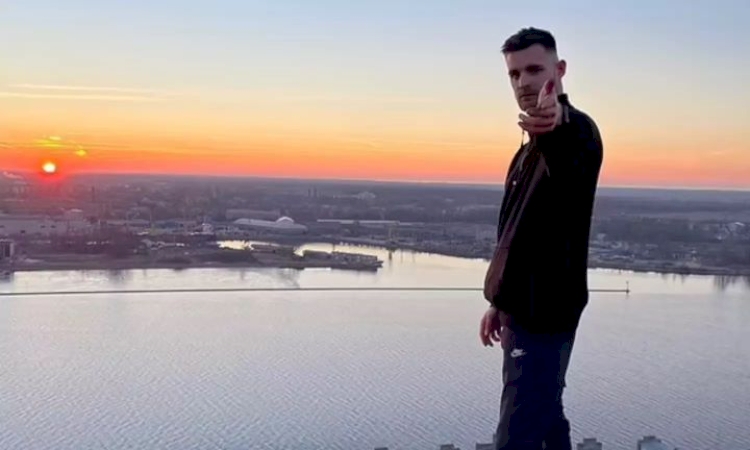Lewis Stevenson, a 26-year-old British influencer, tragically lost his life while performing a dangerous stunt on Spain’s highest bridge in Castilla La Mancha. Known for his passion for extreme activities, Stevenson was attempting to film a video for his social media followers when he lost his grip and fell. Despite his family and friends frequently expressing concern over his risky endeavors, Stevenson continued to pursue his love for thrill-seeking, gaining a reputation online as a daredevil.
Stevenson’s tragic fall from the bridge not only shocked his followers but also led to a renewed discussion about the dangers of extreme sports and the influence of social media in encouraging high-risk behavior. The Castilla La Mancha bridge, located in a remote area of Spain, is off-limits to climbers due to its precarious structure and significant height. Unfortunately, these restrictions did not deter Stevenson from making the attempt that cost him his life.
Stevenson’s love for pushing boundaries was well-documented on his social media channels, where he frequently shared videos of his exploits, ranging from urban climbing to base jumping. His followers admired his bravery and willingness to face challenges head-on, often with little regard for personal safety. However, many of his closest family members and friends often worried about the extent to which he was willing to go to get that perfect shot or video clip.

The incident has sparked debates online, with some critics pointing out that the pressure to create engaging and viral content might push influencers like Stevenson to take unnecessary risks. Social media has played a significant role in the rise of extreme sports and stunts as a form of entertainment, and the pursuit of online fame can sometimes blur the lines between caution and recklessness. There is growing concern about how far influencers will go to captivate their audiences and the impact of these actions on impressionable viewers.
Despite the criticism, the response to Stevenson’s passing has been largely sympathetic, with many paying tribute to his adventurous spirit and his passion for living life on the edge. Tributes poured in from fellow daredevils and content creators who admired Stevenson for his courage and his determination to pursue his dreams, no matter the risks. They celebrated his enthusiasm for exploring new heights and his dedication to perfecting his craft, even in the face of danger.
His family, although devastated by the loss, remembered Stevenson as a loving and driven individual who always had a zest for life. They expressed their deep sorrow at his untimely death but took comfort in knowing that he died doing what he loved most. They also reiterated their concerns about his relentless pursuit of thrill-seeking activities, hoping that his story might serve as a warning to others who are drawn to extreme sports without fully understanding the potential consequences.
This tragedy is not the first of its kind. There have been several instances where influencers have lost their lives while attempting dangerous stunts, often for the sake of social media fame. These incidents have led to calls for greater awareness and education about the risks involved in extreme sports, as well as discussions on whether platforms should do more to discourage content that glorifies such high-risk behaviors.
Experts in the field of social media influence and psychology have weighed in on the matter, suggesting that the need for validation and approval from online audiences can often lead individuals to engage in increasingly risky behavior. The chase for likes, comments, and shares creates a cycle where influencers feel the pressure to constantly outdo their previous feats, leading to potentially deadly situations.
Authorities in Spain have also expressed their concerns about safety measures on popular but hazardous spots like the Castilla La Mancha bridge. They are considering implementing stricter enforcement to prevent climbers and thrill-seekers from accessing restricted areas. The local community, while saddened by Stevenson’s death, hopes that this incident will lead to increased vigilance and possibly save lives in the future by preventing similar tragedies.

In the wake of this incident, several influencers and extreme sports enthusiasts have come forward to share their experiences and to urge others to think twice before attempting dangerous stunts. They emphasize the importance of proper training, understanding the risks, and putting safety first, regardless of the allure of fame or the desire to impress followers online.
Stevenson’s legacy will likely be remembered as a double-edged sword: he was someone who inspired others to live life to its fullest but also served as a cautionary tale about the fine line between bravery and recklessness. His story highlights the need for a balanced approach to pursuing one’s passions, where the thrill of adventure is matched by a commitment to personal safety and awareness of the risks involved.
The influencer community has taken this moment to reflect on their own practices, with many vowing to prioritize their well-being over the demands of producing ever-riskier content. While Stevenson’s death is undeniably tragic, it has sparked an important conversation about how to enjoy extreme sports responsibly and how to navigate the pressures of social media fame without compromising one’s safety.




